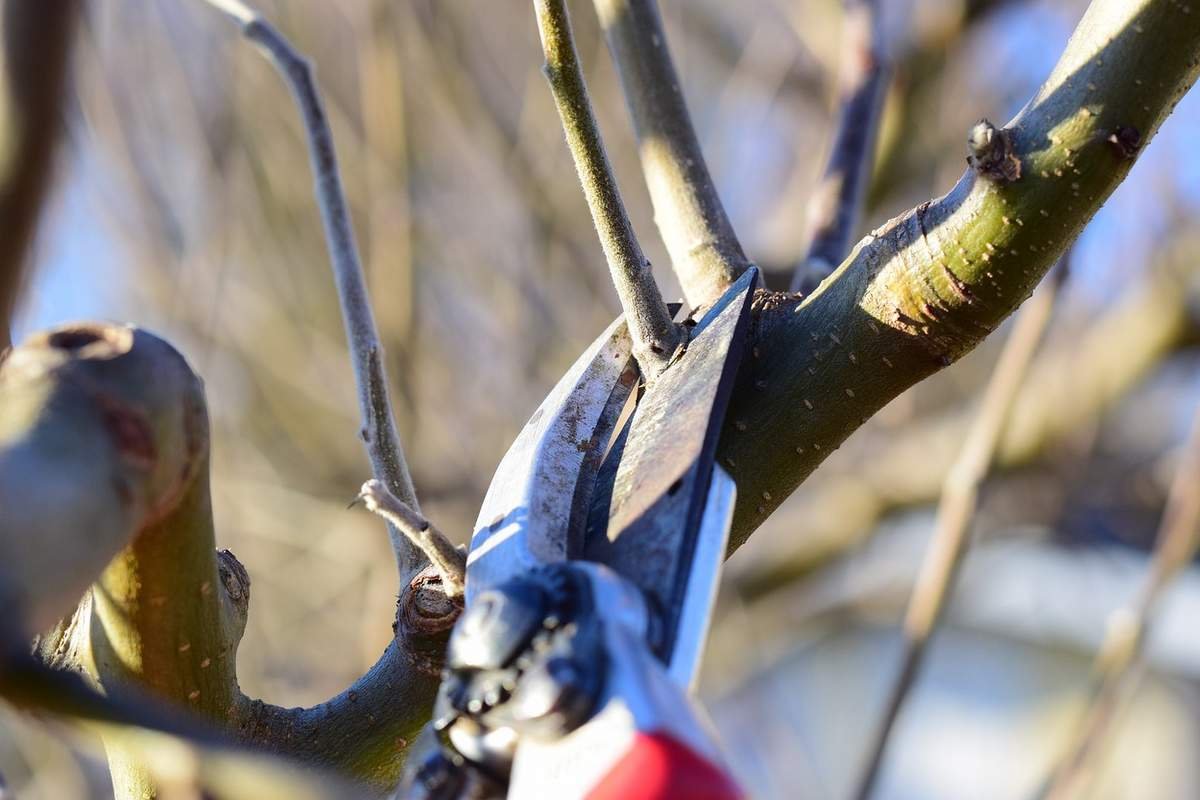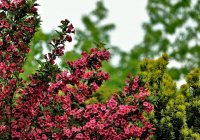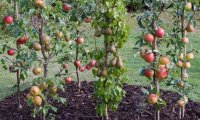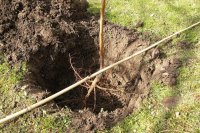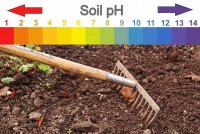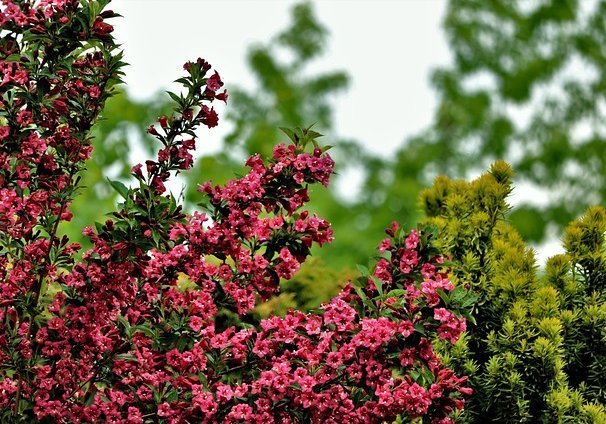
20 most beautiful bushes for your garden

We have selected the most beautiful ornamental shrubs for the garden. Get inspired:
Garden bushes, together with trees, are the backbone of any garden, large or small. Their shape brings texture and volume to the space, and their variability means they have something to offer in all seasons. The vast variety of ornamental garden shrubs offers different shapes, sizes and colors, so growers can choose the right bush for any place in the garden.
Our selection of ornamental shrubs includes mainly smaller-growing species that can be used in garden design as stand-alone shrubs, hedges or in group planting with perennials or other woody plants.
Your selection of garden bushes will depend entirely on your taste and the style of your garden. Garden shrubs are available in every plant nursery and every major garden center, so it's no problem to get one. Enjoy your choice:
1.Barberry Berberis
Height: 2 – 10 feet/0,5 - 3 m based on variety
Flowering time: Spring
Hardiness: USDA 4 - 8
If you are looking for an attractive ornamental shrub that is easy to care for and changes color with the seasons, the barberry may be a good choice. This hardy garden bush is very adaptable and is used in a variety of growing forms in gardens, including deciduous hedges. There are over 400 species of barberry bush, some of which have the sharp thorns from which the barberry takes its name. Barberry is particularly interesting for its small leaves, which can come in a variety of colors (shades of pink, yellow, green, burgundy to deep purple) and in autumn, these colors change to yellow-orange or dark-purple colors. In addition to leaves, the barberry also offers small flowers during spring and red berries in autumn and winter.
Growing conditions: Barberry is a maintenance-free garden bush that will thrive in sun or partial shade. This shrub can thrive in almost any type of soil and usually just needs water from rainfall. Barberry bush is so adaptable that it sometimes behaves like an invasive species that needs to be kept under control.
2. Abelia
Height: 3 – 8 feet/1 – 2,5 m based on variety
Flowering time: Late spring and summer
Hardiness: USDA 4 - 11
Abelia is an ornamental shrub that is decorated with beautiful white, pink, purple or orange flowers during late spring and summer and it also offers autumn coloring of the leaves. It attracts bees and other pollinators to the garden when flowering and produces interesting berries. Abelia grows up to 3 – 7 feet/ 1-2.5 m depending on variety, so it is suitable for growing in beds near other plants but also as a main focal point in your garden.
Growing conditions: Abelia thrives in sunny to semi-shady sites with well-drained soil. It is an undemanding plant that flowers on young wood, so pruning in the early spring is recommended.
3. Camellia 
Height: 6 – 13 feet/2 – 4 m based on variety
Flowering time: From late fall to mid spring based on variety
Hardiness: USDA 7 - 10
Camellias are attractive, evergreen shrubs with glossy, waxy leaves and gorgeous flowers that bloom for several weeks at an unusual time - from late autumn to early spring (depending on variety). Despite their beauty and majesty, camellias are not difficult to care for, so they are very popular in warmer climates. In garden design, it is mostly used as a freestanding shrub, which retains its compact shape and usually does not need pruning. However, camellia is also suitable for planting together with other plants in beds or as a flowering hedge.
Growing conditions: Camellia thrives in semi-shaded sites with moist but well-drained soil.
4. Spirea.jpg)
Height: 1 – 10 feet/0.3 – 3 m based on variety
Flowering time: Late spring or summer based on variety
Hardiness: USDA 4 - 8
The spirea bush is one of the most popular ornamental shrubs used in gardens for several reasons. In addition to its beautiful blooms in shades of red and purple, this shrub offers an attractive leaf texture that changes color to yellow-orange during autumn, bringing variation to the garden. This beautiful bush combines very well with other woody plants or perennials, and its dense growth can be trimmed at will. Spirea bush is popularly used in mixed planting, as a solitaire, groundcover or even as an informal hedge.
Growing conditions: Spirea bush prefers sunny sites with well-drained soil.
5. Rhododendron
Height: 1 – 13 feet/0.3 – 4 m based on variety
Flowering time: Spring or summer based on variety
Hardiness: USDA 4 - 8
Rhododendron is an iconic plant that perhaps every grower is familiar with. This acid-loving, ornamental shrub attracts attention in the garden thanks to its beautiful foliage and distinctive, large flowers blooming in shades of pink, purple, red and white. There are thousands of deciduous and evergreen rhododendron varieties of different sizes, shapes and flower colors for everyone to choose from for their garden.
Growing conditions: Rhododendrons will thrive best in semi-shaded sites, ideally under a tree canopy with diffused light and in acidic soil with plenty of moisture.
6. Butterfly bush Buddleja
Height: 6 – 13 feet/2 – 4 m based on variety
Flowering time: From summer to autumn
Hardiness: USDA 5 - 9
The large, fragrant, lilac-like inflorescences make butterfly bush an attractive shrub suitable for any garden. Butterfly bush blooms from summer to fall and attracts pollinators from the neighborhood with its wonderful fragrance. This flowering bush is available in a range of sizes and colors, making it suitable for a variety of uses in the garden including mixed planting with other plants, a free-standing shrub or a hedge along paths or fences.
Growing conditions: butterfly bush prefers sunny sites with well-drained soil. This shrub is easy to care for, only needing watering during prolonged droughts and does not require extra-nutritious soil.
7. Smoke bush Cotinus
Height: 6 – 16 feet/2 – 5 m based on variety
Flowering time: Early summer
Hardiness: USDA 5 - 9
Smoke bush was named for its appearance, as it blooms in early summer with strange, tufted flowers that resemble smoke. These clusters of flowers last for weeks and gradually darken over time, creating an interesting show in the garden. The smoke bush is also attractive with its oval leaves, which are either green or dark burgundy. Some varieties of this deciduous shrub offer an autumn leaf coloration in orange tones.
Growing conditions: Smoke bush is adaptable and easy to grow. A sunny position with dry, well-drained soil suits it best.
8. Fothergilla
Height: 2 – 8 feet/0.5 – 2.5 m based on variety
Flowering time: Early spring
Hardiness: USDA 5 - 8
Fothergilla is not a widely-known garden bush, but it deserves more attention as it has something to offer in every season. Charming white, brush-like flowers appear in early spring before the leaves appear, followed by blue-green leaves with a wonderful texture. In autumn, the leaves turn into a vibrant flood of yellow, orange and red that brightens up the garden even more.
Growing conditions: Fothergilla prefers sunny to semi-shady locations and acidic, well-drained soil. This ornamental shrub will thrive if a layer of mulch in the form of pine bark or pine needles is placed around it to keep the soil moist and acidic for a longer time.
9. Daphne mezereum
Height: 1 – 6 feet/0.3 – 2 m based on variety
Flowering time: End of winter to early spring
Hardiness: USDA 5 - 8
Daphne mezereum is one of not-so-widely-known garden bushes, but it certainly has a lot to offer. This ornamental shrub is one of the first plants to flower in the garden, with beautiful deep pink or purple flowers (depending on the variety) that densely cover the upright branches. The expressive flowers are replaced in summer by long oleander-like leaves and striking red berries. This low-growing shrub is excellent in combination with other perennials, but it can also be used as a free-standing bush.
Growing conditions: Daphne mezereum is an undemanding garden bush that prefers semi-shady sites with moist soil and cooler weather. It is known for its hardiness, so it is also suitable for growing in colder climates.
10. Rose of Sharon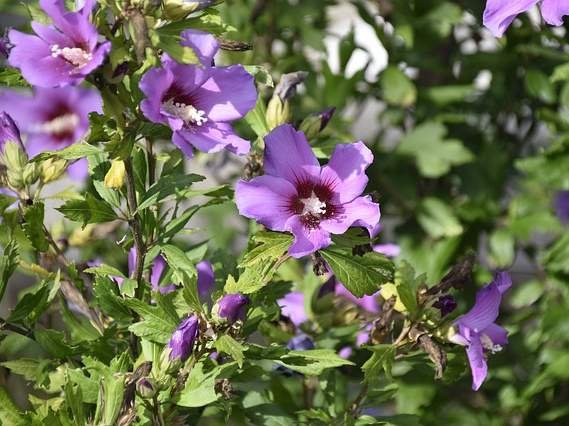
Height: 3 – 10 feet/1 – 3 m based on variety
Flowering time: From summer to fall
Hardiness: USDA 5 - 9
Rose of Sharon is a garden bush that flowers from the height of summer until autumn, a time when most plants in the garden have finished flowering. It is therefore often combined with other ornamental trees and plants that flower early in the season. There are dozens of varieties of this ornamental shrub in different sizes and with different color combinations (shades of white, pink, red and blue) and flower shapes, so rose of Sharon can be used as a focal point of the garden but also as part of a combined planting.
Growing conditions: Rose of Sharon prefers a sunny location with any type of well-drained soil. A thick layer of mulch will protect this flowering shrub from winter frost and keep the soil moist during the growing season.
11. Euonymus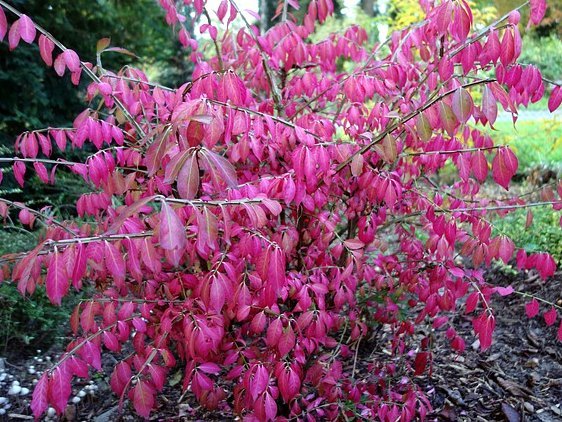
Height: 1 – 15 feet/0.3 – 4.5 m based on variety
Flowering time: From late spring to early summer
Hardiness: USDA 5 - 8
Euonymus is a very popular shrub in ornamental gardens. It offers a rich leaf texture and a variety of shapes and sizes. Variegated cultivars are particularly popular with growers as they attract attention from a distance and brighten up their surroundings throughout the season. There are known evergreen species (e.g., euonymus japonicus, euonymus fortunei) as well as deciduous species (e.g., euonymus europaeus, euonymus alatus) whose leaves turn shades of red and orange in autumn.
Growing conditions: Euonymus is an undemanding garden bush that prefers sunny to semi-shady locations and well-drained soil. It is relatively drought tolerant, but evergreen species in particular benefit from mulch to protect them from hard frosts.
12. Deutzia
Height: 2 – 6 feet/0.5 – 2 m based on variety
Flowering time: Spring
Hardiness: USDA 5 - 8
Deutzia is one of the most popular flowering shrubs because it is attractive in all seasons. In spring, it produces abundant clusters of bell-shaped flowers on long branches, and during summer, it is interesting for the texture of its leaves, which in some varieties turn red in autumn. During winter, the reddish bark stands out again, contrasting with the snow. Thanks to these qualities, deutzia finds a wide range of uses in garden design.
Growing conditions: Deutzia prefers sun to partial shade with well-drained soil, as permanently waterlogged soil can cause root rot. Deutzia benefits from regular pruning after flowering and from a thick layer of mulch to protect the roots against frost and to keep the soil moist.
13. Flowering quince Chaenomeles
Height: 5 – 10 feet/1.5 – 3 m based on variety
Flowering time: Spring
Hardiness: USDA 4 - 9
Flowering quince is a deciduous shrub that is the main focal point in the garden when in bloom thanks to its beautiful, large flowers in shades of red, pink or orange. Depending on the variety, this garden bush can grow up to 10 feet (3 m), so it needs to be given plenty of space in the garden. Flowering quince is mostly used as the main garden feature in mixed plantings, but in dwarf form, it is also often grown in pots as a bonsai. Of the various species of this woody plant, the Japanese quince chaenomeles japonica and the Chinese flowering quince chaenomeles speciosa are mainly used for ornamental purposes.
Growing conditions: Sunny locations with well-drained soil are suitable for flowering quince. It is hardy and almost maintenance-free.
14. Weigela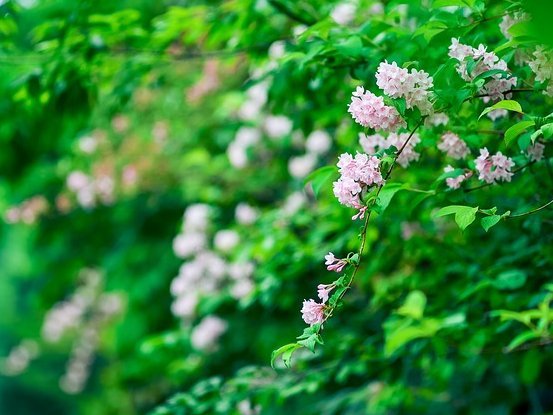
Height: 2 – 10 feet/0.5 – 3 m based on variety
Flowering time: Late spring with a second weaker flowering in late summer.
Hardiness: USDA 4 - 8
Weigela is also one of the favorite bushes in the garden, changing its appearance throughout all seasons. During late spring, the weigela attracts pollinators from the neighborhood with its trumpet-shaped flowers, and it can offer an interesting leaf texture that turns autumnal shades towards the end of the growing season. This deciduous shrub has therefore many uses in gardens and can be used in beds, as a free-standing shrub, in row planting, but also as a popular woody plant for growing in pots.
Growing conditions: Weigelas prefer sun to partial shade with well-drained soil and plenty of moisture. Weigelas benefit from regular pruning after flowering and a thick layer of mulch to protect against deep frost and to maintain soil moisture.
15. Enkianthus campanulatus%20-%20garden%20bush.jpg)
Height: 3 – 12 feet/1 – 3.6 m based on variety
Flowering time: From late spring to late summer.
Hardiness: USDA 5 - 7
Enkianthus campanulatus, also known as red vein enkianthus, is an attractive garden shrub, whose growth habit resembles a smaller version of large trees. Twisted branches, small leaves and tiny bell-shaped pink flowers combine to create a magnificent ensemble that stands out as a dominant feature in the garden. Enkianthus is also exceptional in its autumn coloring, brightening up its surroundings with rich shades of yellow, orange and red.
Growing conditions: Enkianthus thrives in sunny to semi-shady locations with moist, acidic (pH 4 - 6) soil. This woody plant can also be grown on heathland.
16. Beautyberry Callicarpa
Height: 3 – 6 feet/1 – 2 m based on variety
Flowering time: From late spring to summer.
Hardiness: USDA 6 - 10
The uniqueness of the beautyberry bush lies in its beautiful purple berries, which adorn the plant during autumn and winter. These berries are even edible and suitable for making jams or for other processing. In addition, American beautyberry produces beautiful pink flowers during late summer, and its leaves turn yellow in autumn, which creates an interesting contrast with the purple berries.
Growing conditions: Beautyberry prefers sunny to semi-shady sites with plenty of moisture. It thrives in heavier clay soils.
17. Forsythia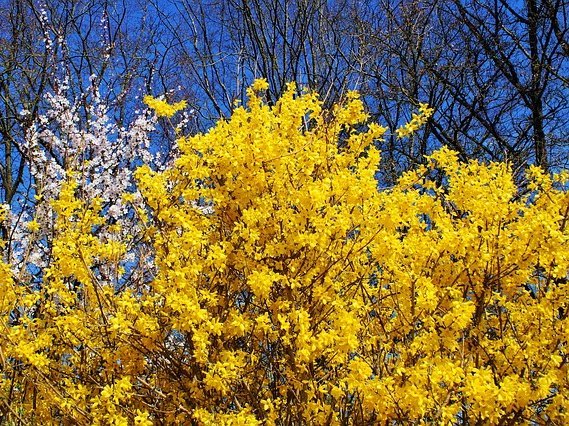
Height: 6 – 10 feet/2 – 3 m based on variety
Flowering time: Early spring
Hardiness: USDA 3 - 8
Flowering forsythias have long been a symbol of the coming spring. Attractive, bright yellow flowers appear on the branches before the leaves have even budded, which creates an enchanting show that is recognizable from a distance. This flowering shrub can be grown in combination with other plants, as a free-standing shrub and even as a hedge.
Growing conditions: Forsythia bush will thrive best in a sunny location with well-drained soil. It is a fast-growing plant, so keeping it compact will require regular pruning.
18. Mountain laurel Kalmia latifolia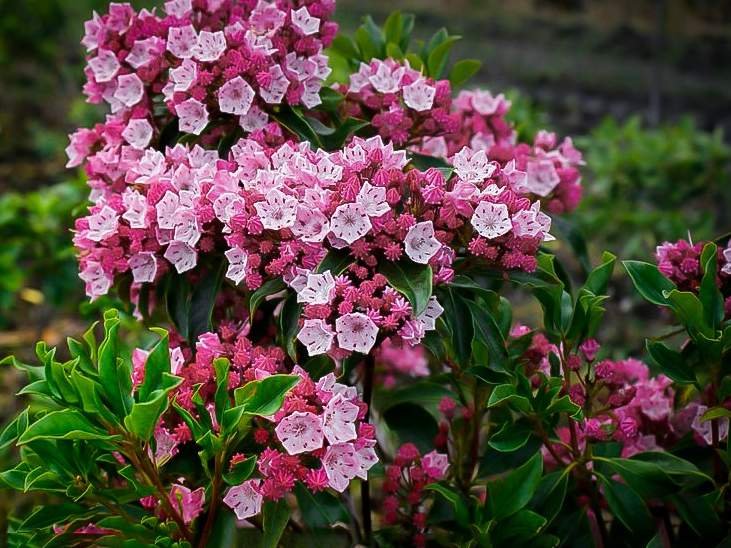
Height: 5 – 13 feet/1.5 – 4 m based on variety
Flowering time: From late spring to early summer
Hardiness: USDA 4 - 9
Despite being an evergreen shrub, mountain laurel is quite hardy, so it is possible to grow this plant in colder climates (USDA zone 5) as well. In spring and summer, mountain laurel offers beautiful blooms in the form of brightly colored inflorescences that smell nice and attract pollinators from the neighborhood. This evergreen bush is also very sturdy and adaptable, making it easy to grow. Mountain laurel can be combined with taller woody plants or perennials, used in hedge plantings or as a free-standing shrub.
Growing conditions: Mountain laurel prefers partial shade with well-drained, acidic soil. Mountain laurel is relatively resistant to frost and waterlogged or dry soil, so it is not demanding in terms of care.
19. Ninebark Physocarpus%20bush.jpg)
Height: 3 – 10 feet/1 – 3 m based on variety
Flowering time: From late spring to summer
Hardiness: USDA 2 - 8
The main feature of this ornamental shrub is the texture and rich color variations of its leaves, which make the possibilities of using it in gardens endless. Ninebark is available in leaf colors ranging from green to bronze and dark maroon. In addition, this deciduous shrub blooms with attractive, creamy-colored flowers in spring and summer, and during autumn, its leaves turn orange-red shades. Ninebark shrub is also adaptable and very hardy, so it can be grown even in colder climates.
Growing conditions: Ninebark is an undemanding woody plant, resistant to both drought and extreme frosts. It prefers a sunny to semi-shady location and well-drained soil.
20.Beauty bush Kolkwitzia amabilis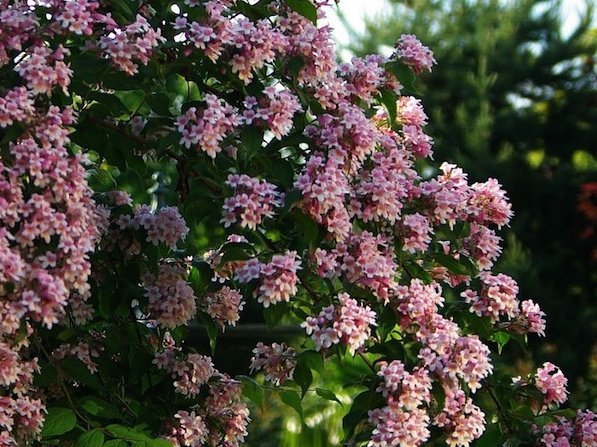
Height: 3 – 10 feet/1 – 3 m based on variety
Flowering time: From late spring to early summer
Hardiness: USDA 5 - 9
If you are looking for a dense, vigorously growing, flowering shrub for your garden, beauty bush is a great alternative. In late spring/summer, the beauty bush draws attention to itself with a flood of gorgeous, bell-shaped flowers in shades of pink and white that spread a sweet scent to attract pollinators. This ornamental shrub is also attractive in autumn, when the leaves, colored in shades of pink, orange and red, stand out.
Growing conditions: Beauty bush prefers sunny locations with moist, well-drained soil. Regular pruning of this shrub results in a more compact shape as well as more profuse flowering.
There are many other types of garden shrubs that we have not mentioned in our selection but are noteworthy as well. For example, classic garden bushes such as hydrangea, holly, rose, conifers or the lesser-known ornamental shrubs such as viburnum, corkscrew hazel (corylus avellana 'contorta'), amelanchier, dogwood, elderberry and others.

Author: Anna Beck

 Author
Author


